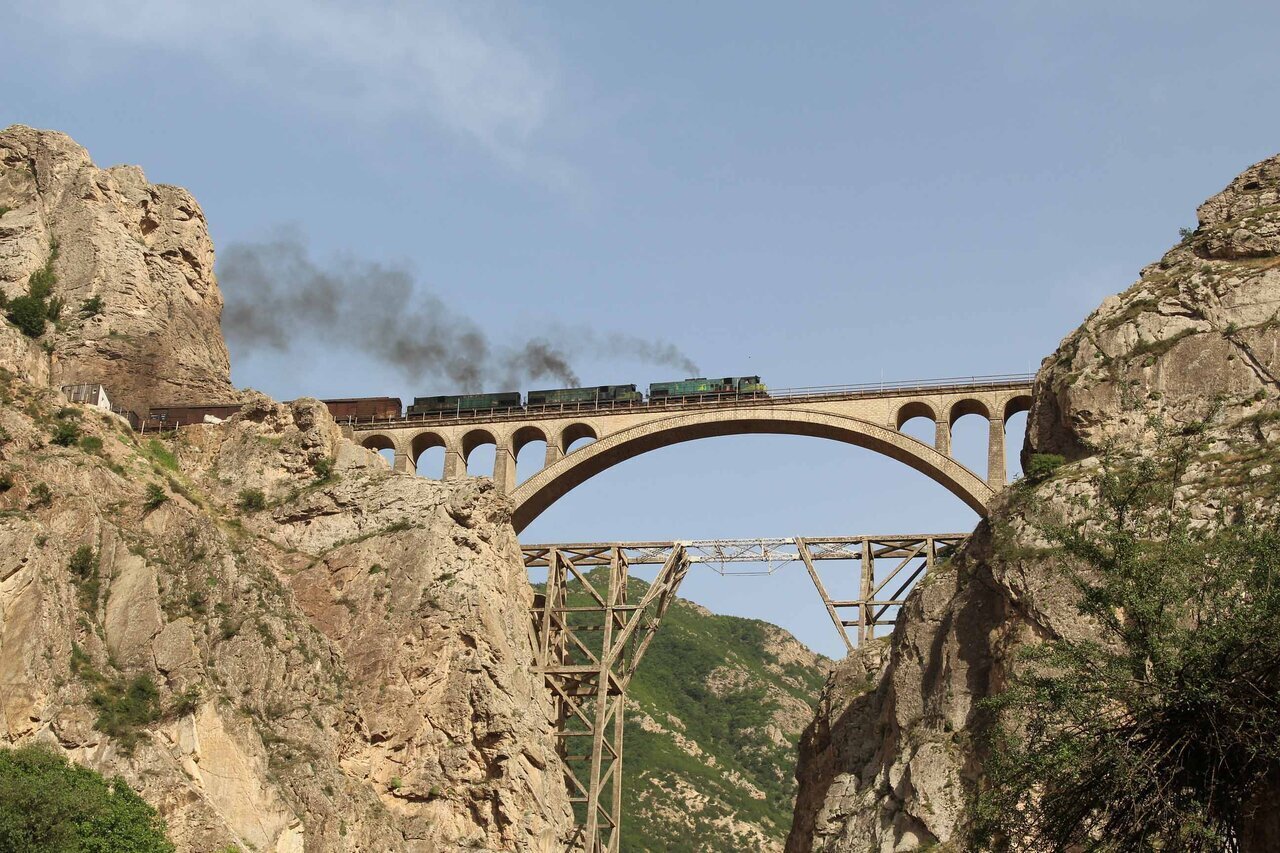Trans-Iranian Railway among top 5 registered by UNESCO

TEHRAN—Only five railways are on the UNESCO list, which are from Austria, India, Switzerland, Italy, and Iran, said Vahidali Qardashi, head of the World Heritage Site of the Trans-Iranian Railway.
Speaking at the special gathering attended by Deputy Cultural Heritage Minister Ali Darabi, a senior official of the Cultural Heritage Ministry Farhad Azizi and managers and assistants of cultural heritage departments of eight provinces connected to the national railway on Tuesday, he said that Trans-Iranian Railway was the first North-South Corridor in the region that connected Caspian Sea to the Persian Gulf, IRNA reported.
During the gathering, the technical, cultural and tourism capacities of the 1394-kilometer-long railway was studied. This route, passing through eight sub-climates and four major climates, has created an unparalleled masterpiece of engineering, architecture, art, and cultural interaction. The construction of more than 251 large bridges, 4,000 small bridges, 245 tunnels, and 90 stations on this route, including the Veresk Bridge, the three golden lines, and the largest metal bridge over the Karun River in Ahvaz, is a manifestation of Iranian engineering power in the 20th century. The total length of the tunnels on this route reaches 83 kilometers, including the Gaduk and Chahar Abdiz tunnels; works that were considered technical and architectural masterpieces of the world in their time.
Qardashi said that it is the first railway registered from West Asia. The engineering masterpiece is a symbol of Iranian management during the history.
“One of the unique features of Iran's railway is that it passes through four different climates. passengers on a rail trip can experience significant differences in temperature and climate, a blessing that few countries in the world enjoy.”
He emphasized that this railway is not only a transportation route, but also a unique example of an engineering system that has created remarkable transformations in natural and human environments by crossing mountains, plains and rivers. This route shows how engineering can overcome geographical limitations while creating new opportunities for the development of local communities and cultural ties, he pointed out.
Also, Farhad Azizi, a senior official of the Cultural Heritage Ministry, said that for any global project, the key to success and proper utilization of the potential of these projects is to have a proportionate and effective plan and facilitate the participation of all stakeholders, especially local people and communities.
“Today, we have a unique capacity and a reputable and global brand. We must hold these meetings in form of practical and interactive workshops and provide the necessary platforms for introducing the outstanding global values of the works. The program of the National and World Heritage Sites is not limited to introducing the works, but is designed with the aim of laying the groundwork for the maximum role of all institutions, sympathizers and investors so that comprehensive participation leads to strengthening the infrastructure and sustainable exploitation of this world heritage and Iran's railways become a powerful tourism and economic axis.”
Meanwhile, Deputy Cultural Heritage Minister Ali Darabi said many Iranian families have played a role in the railway, and this social capital is the main support for the global registration of this great work.
He also pointed out the importance of the railway in the link between heritage protection and sustainable tourism development, saying that this historical route can be a model for preserving cultural values along with intelligent exploitation in the field of tourism, so that heritage protection and economic development can proceed simultaneously.
KD
Leave a Comment